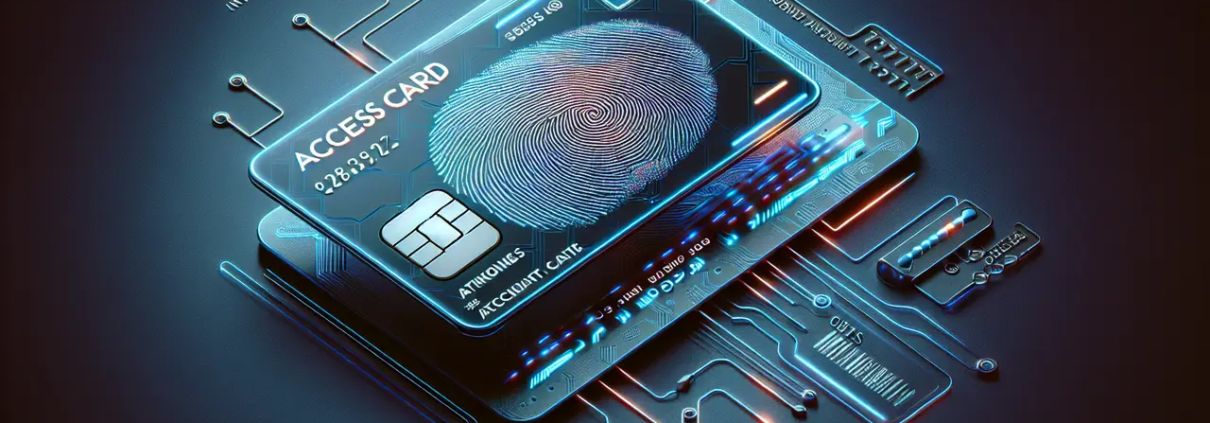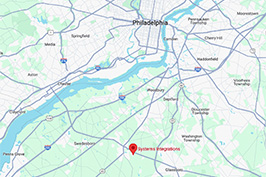Understanding DesFire EV3 and Its Role in Modern Security Systems
In today’s rapidly advancing world, security systems are more important than ever. One of the technologies at the forefront of this evolution is the DesFire EV3. In this blog, we’ll explore what DesFire EV3 is and how it’s shaping the future of security.
What is DesFire EV3?
DesFire EV3 is part of the third generation of contactless smart card technology. It enhances security, flexibility, and performance, making it ideal for various applications such as access control, transport, and micro-payment. As advancements in digital threats continue, systems like DesFire EV3 offer a strong response by incorporating advanced AES128 encryption and mutual authentication protocols that secure information more robustly than previous models. The smart card also supports seamless interoperability with existing infrastructure, providing a practical upgrade path for businesses adopting this technology. Furthermore, as more industries transition to digital systems globally, the demand for solutions like DesFire EV3 grows, establishing it as a pillar of contemporary security measures.
The DesFire EV3 builds upon its predecessors by integrating cutting-edge security features while ensuring compatibility with older technologies. This blend of innovation and backward compatibility allows for smoother transitions and broader adoption across different sectors. Beyond mere access control, DesFire EV3’s architecture supports complex applications, adding value to multi-use environments such as corporate campuses, universities, and metropolitan transportation networks. Its adaptability makes DesFire EV3 an attractive choice for modern enterprises eager to leverage technology for both security and operational efficiency.
The Evolution from Proximity Cards to DesFire EV3
Proximity cards have been staples in secure access, but as security needs evolved, so did technology. Transitioning from proximity cards to DesFire EV3 signifies a move towards more sophisticated, tamper-proof systems. While proximity cards offered basic security and ease of use, they fell short despite modern challenges like card cloning and unauthorized access attempts. The leap to DesFire EV3 addresses these vulnerabilities by enhancing security protocols and introducing features that prevent common exploit methods associated with lower frequency cards.
The shift from proximity cards to advanced solutions like DesFire EV3 is not merely technological, but also strategic. With features such as secure channel communication, random UID allocation, and biometric integration options, DesFire EV3 serves as a comprehensive security measure, minimizing risks inherent in older systems. Moreover, it facilitates a graceful migration path where organizations can stagger their upgrades without immediate full-scale replacements, thus aligning with budgetary constraints and operational continuities.
Cloud-based security frameworks, which are increasingly becoming the norm, integrate well with DesFire EV3, allowing these cards to synchronize effortlessly with remote databases and security systems. This evolution highlights a broader trend where security is no longer confined to standalone systems but integrates into a cohesive digital ecosystem that offers real-time monitoring and analytics.
Key Features of DesFire EV3
The standout features of DesFire EV3 include increased encryption standards, enhanced key management, and backward compatibility. These attributes provide a robust security platform while maintaining ease of integration. Notably, DesFire EV3 employs advanced encryption algorithms like AES128, ensuring data protection against various digital threats including spoofing and eavesdropping. Additionally, its dynamic file management system allows for multiple configurations tailored to specific organizational security needs, providing flexibility and personalization in securing sensitive data environments.
Comprehensive security doesn’t end at encryption; DesFire EV3 also boasts advanced authentication mechanisms. By utilizing mutual authentication processes, which require both card and system verification, these systems offer an unmatched level of protection. This reduces the likelihood of successful attacks significantly, providing peace of mind to security administrators.
Furthermore, DesFire EV3 supports a Secure Identity Object (SIO) architecture that optimizes data integrity and confidentiality. This feature, coupled with custom key profiles, enables tailored security measures based on specific enterprise requirements. By ensuring that data is not only encrypted but also transmitted securely, DesFire EV3 fills a critical gap left by earlier proximity card solutions.
Applications of DesFire EV3 in Modern Security Systems
DesFire EV3 is versatile, being used in several sectors such as public transportation, secure identity, and cashless payment systems. Its flexibility and security make it a preferred choice for system architects. Through its multi-application support, DesFire EV3 can facilitate diverse use cases, improving efficiency and user experience across sectors. For instance, in public transit, it can be employed not only for fare collection but also for monitoring commuter traffic patterns, thus enabling better resource allocation and operational planning.
In corporate settings, DesFire EV3 empowers secure identity management, accommodating access privileges and seamlessly syncing with organizational hierarchies. The integration of advanced contactless technology within these cards aligns with modern offices’ needs, enabling easy access to facilities while mitigating security risks. This function extends to educational institutions, where controlling access to academic resources and sensitive areas is paramount.
Advantages Over Previous Generations
Compared to earlier versions, DesFire EV3 offers advantages like enhanced security protocols, better transaction speed, and support for multi-application environments. These improvements address the increasing demands for secure and efficient systems. With transaction speeds optimized for faster processing, the user experience is significantly improved, a feature beneficial in high-traffic scenarios like transportation hubs.
The enhanced security protocols offer layered defense mechanisms. For instance, DesFire EV3’s encryption and key management schemes ensure that sensitive data is not easily compromised. Importantly, the ability to harness backward compatibility allows for a smoother transition for systems still operating on previous technology platforms, safeguarding investments in older infrastructure while stepping into the future of secure access solutions.
Securing the Future with DesFire EV3
As we’ve explored in this blog, DesFire EV3 is more than just a technological advancement; it’s a leap towards a more secure future. By understanding its components and capabilities, we can better appreciate its role and potential impact on modern security systems.





